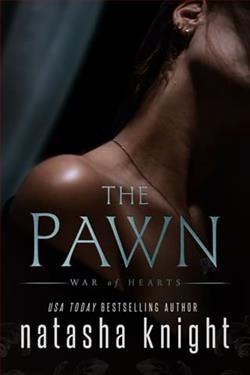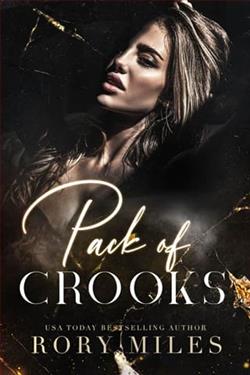Page 31 of Black Coffee (Hercule Poirot 7)
Times Literary Supplement: ‘An event… There is plenty of entertainment.’
The New York Times: ‘The Christie fan of longest standing, who thinks he knows every one of her tricks, will still be surprised by ... the twists here.’
31. Dead Man’s Folly (1956)
Sir George and Lady Stubbs desire to host a village fete with a difference — a mock murder mystery. In good faith, Ariadne Oliver, the much-lauded crime novelist, agrees to organise the proceedings. As the event draws near, however, Ariadne senses that something sinister is about to happen — and calls upon her old friend Hercule Poirot to come down to Dartmoor for the festivities. Ariadne’s instincts, alas, are right on the money, and soon enough Poirot has a real murder to investigate.
The New York Times: ‘The infallibly original Agatha Christie has come up, once again, with a new and highly ingenious puzzle-construction.’
Times Literary Supplement: ‘The solution is of the colossal ingenuity we have been conditioned to expect.’
32. Cat Among the Pigeons (1959)
A revolution in the Middle East has a direct and deadly impact upon the summer term at Meadowbank, a picture-perfect girls’ school in the English countryside. Prince Ali Yusuf, Hereditary Sheikh of Ramat, whose great liberalizing experiment — ‘hospitals, schools, a Health Service’ — is coming to chaos, knows that he must prepare for the day of his exile. He asks his pilot and school friend, Bob Rawlinson, to care for a packet of jewels. Rawlinson does so, hiding them among the possessions of his niece, Jennifer Sutcliffe, who is bound for Meadowbank. Rawlinson is killed before he can reveal the hiding place — or even the fact that he has employed his niece as a smuggler. But someone knows, or suspects, that Jennifer has the jewels. As murder strikes Meadowbank, only Hercule Poirot can restore the peace.
Of note: In this novel we meet Colonel Pikeaway, later to appear in the non-Poirots Passenger to Frankfurt and Postern of Fate, and we meet the financier Mr Robinson, who will also appear in Postern of Fate and who will show up at Miss Marple’s Bertram’s Hotel.
Daily Express, of Cat Among the Pigeons: ‘Immensely enjoyable.’
The New York Times: ‘To read Agatha Christie at her best is to experience the rarefied pleasure of watching a faultless technician at work, and she is in top form in Cat Among the Pigeons.’
33. The Adventure of the Christmas Pudding (1960)
‘This book of Christmas fare may be described as “The Chef ’s Selection.” I am the Chef!’ Agatha Christie writes in her Foreword, in which she also recalls the delightful Christmases of her youth at Abney Hall in the north of England. But while the author’s Christmases were uninterrupted by murder, her famous detective’s are not (see also Hercule Poirot’s Christmas). In the title novella, Poirot — who has been coerced into attending ‘an old-fashioned Christmas in the English countryside’ — gets all the trimmings, certainly, but he also gets a woman’s corpse in the snow, a Kurdish knife spreading a crimson stain across her white fur wrap.
Collected within: The Adventure of the Christmas Pudding; ‘The Mystery of the Spanish Chest’; The Under Dog (novella); ‘Four-and-Twenty Blackbirds’; ‘The Dream’; and a Miss Marple mystery, ‘Greenshaw’s Folly.’
Times Literary Supplement: ‘There is the irresistible simplicity and buoyancy of a Christmas treat about it all.’
34. The Clocks (1963)
Sheila Webb, typist-for-hire, has arrived at 19 Wilbraham Crescent in the seaside town of Crowdean to accept a new job. What she finds is a well-dressed corpse surrounded by five clocks. Mrs Pebmarsh, the blind owner of No. 19, denies all knowledge of ringing Sheila’s secretarial agency and asking for her by name — yet someone did. Nor does she own that many clocks. And neither woman seems to know the victim. Colin Lamb, a young intelligence specialist working a case of his own at the nearby naval yard, happens to be on the scene at the time of Sheila Webb’s ghastly discovery. Lamb knows of only one man who can properly investigate a crime as bizarre and baffling as what happened inside No. 19 — his friend and mentor, Hercule Poirot.
The New York Times: ‘Here is the grand-manner detective story in all its glory.’
The Bookman: ‘Superlative Christie ... extremely ingenious.’
Saturday Review: ‘A sure-fire attention-gripper — naturally.’
35. Third Girl (1966)
Hercule Poirot is interrupted at breakfast by a young woman who wishes to consult with the great detective about a murder she ‘might have’ committed — but upon being introduced to Poirot, the girl flees. And disappears. She has shared a flat with two seemingly ordinary young women. As Hercule Poirot — with the aid of the crime novelist Mrs Ariadne Oliver — learns more about this mysterious ‘third girl,’ he hears rumours of revolvers, flick-knives, and bloodstains. Even if a murder might not have been committed, something is seriously wrong, and it will take all of Poirot’s wits and tenacity to establish whether the ‘third girl’ is guilty, innocent, or insane.
Sunday Telegraph: ‘First-class Christie.’
Financial Times: ‘Mesmerising ingenuity.’
36. Hallowe’en Party (1969)
Mystery writer Ariadne Oliver has been invited to a Hallowe’en party at Woodleigh Common. One of the other guests is an adolescent girl known for telling tall tales of murder and intrigue — and for being generally unpleasant. But when the girl, Joyce, is found drowned in an apple-bobbing tub, Mrs Oliver wonders after the fictional nature of the girl’s claim that she had once witnessed a murder. Which of the party guests wanted to keep her quiet is a question for Ariadne’s friend Hercule Poirot. But unmasking a killer this Hallowe’en is not going to be easy — for there isn’t a soul in Woodleigh who believes the late little storyteller was actually murdered.
Daily Mirror: ‘A thundering success… a triumph for Hercule Poirot.’
37. Elephants Can Remember (1972)
‘The Ravenscrofts didn’t seem that kind of person. They seemed well balanced and placid.’
And yet, twelve years earlier, the husband had shot the wife, and then himself — or perhaps it was the other way around, since sets of both of their fingerprints were on the gun, and the gun had fallen between them. The case haunts Ariadne Oliver, who had been a friend of the couple. The famous mystery novelist desires this real-life mystery solved, and calls upon Hercule Poirot to help her do so. Old sins have long shadows, the proverb goes. Poirot is now a very old man, but his mind is as nimble and as sharp as ever and can still penetrate deep into the shadows. But as Poirot and Mrs Oliver and Superintendent Spence reopen the long-closed case, a startling discovery awaits them. And if memory serves Poirot (and it does!), crime — like history — has a tendency to repeat itself.
The Times: “Splendid.”
38. Poirot’s Early Cases (1974)
With his career still in its formative years, we learn many things about how Poirot came to exercise those famous ‘grey cells’ so well. Fourteen of the eighteen stories collected herein are narrated by Captain Arthur Hastings — including what
would appear to be the earliest Poirot short story, ‘The Affair at the Victory Ball,’ which follows soon on the events of The Mysterious Affair at Styles. Two of the stories are narrated by Poirot himself, to Hastings. One, ‘The Chocolate Box,’ concerns Poirot’s early days on the Belgian police force, and the case that was his greatest failure: ‘My grey cells, they functioned not at all,’ Poirot admits. But otherwise, in this most fascinating collection, they function brilliantly, Poirot’s grey cells, challenging the reader to keep pace at every twist and turn.
Collected within: ‘The Affair at the Victory Ball’; ‘The Adventure of the Clapham Cook’; ‘The Cornish Mystery’; ‘The Adventure of Johnnie Waverly’; ‘The Double Clue’; ‘The King of Clubs’; ‘The Lemesurier Inheritance’; ‘The Lost Mine’; ‘The Plymouth Express’; ‘The Chocolate Box’; ‘The Submarine Plans’; ‘The Third-Floor Flat’; ‘Double Sin’; ‘The Market Basing Mystery’; ‘Wasps’ Nest’; ‘The Veiled Lady’; ‘Problem at Sea’; ‘How Does Your Garden Grow?’
Sunday Express: ‘Superb, vintage Christie.’
39. Curtain: Poirot’s Last Case (1975)
Captain Arthur Hastings narrates. Poirot investigates. ‘This, Hastings, will be my last case,’ declares the detective who had entered the scene as a retiree in The Mysterious Affair at Styles, the captain’s, and our, first encounter with the now-legendary Belgian detective. Poirot promises that, ‘It will be, too, my most interesting case — and my most interesting criminal. For in X we have a technique superb, magnificent... X has operated with so much ability that he has defeated me, Hercule Poirot!’ The setting is, appropriately, Styles Court, which has since been converted into a private hotel. And under this same roof is X, a murderer five-times over; a murderer by no means finished murdering. In Curtain, Poirot will, at last, retire — death comes as the end. And he will bequeath to his dear friend Hastings an astounding revelation. ‘The ending of Curtain is one of the most surprising that Agatha Christie ever devised,’ writes her biographer, Charles Osborne.















